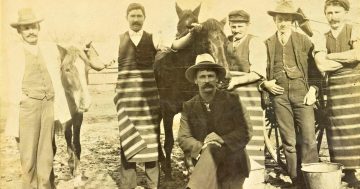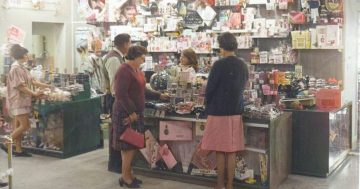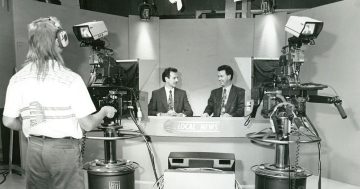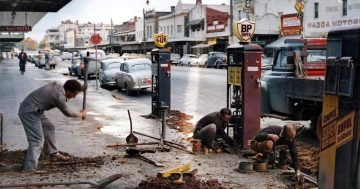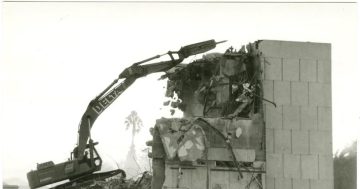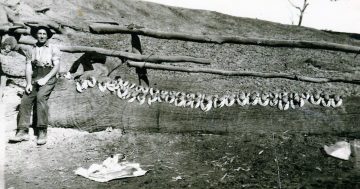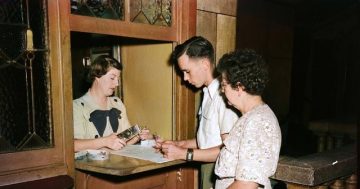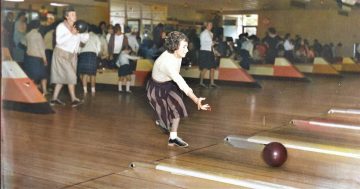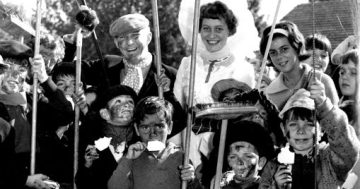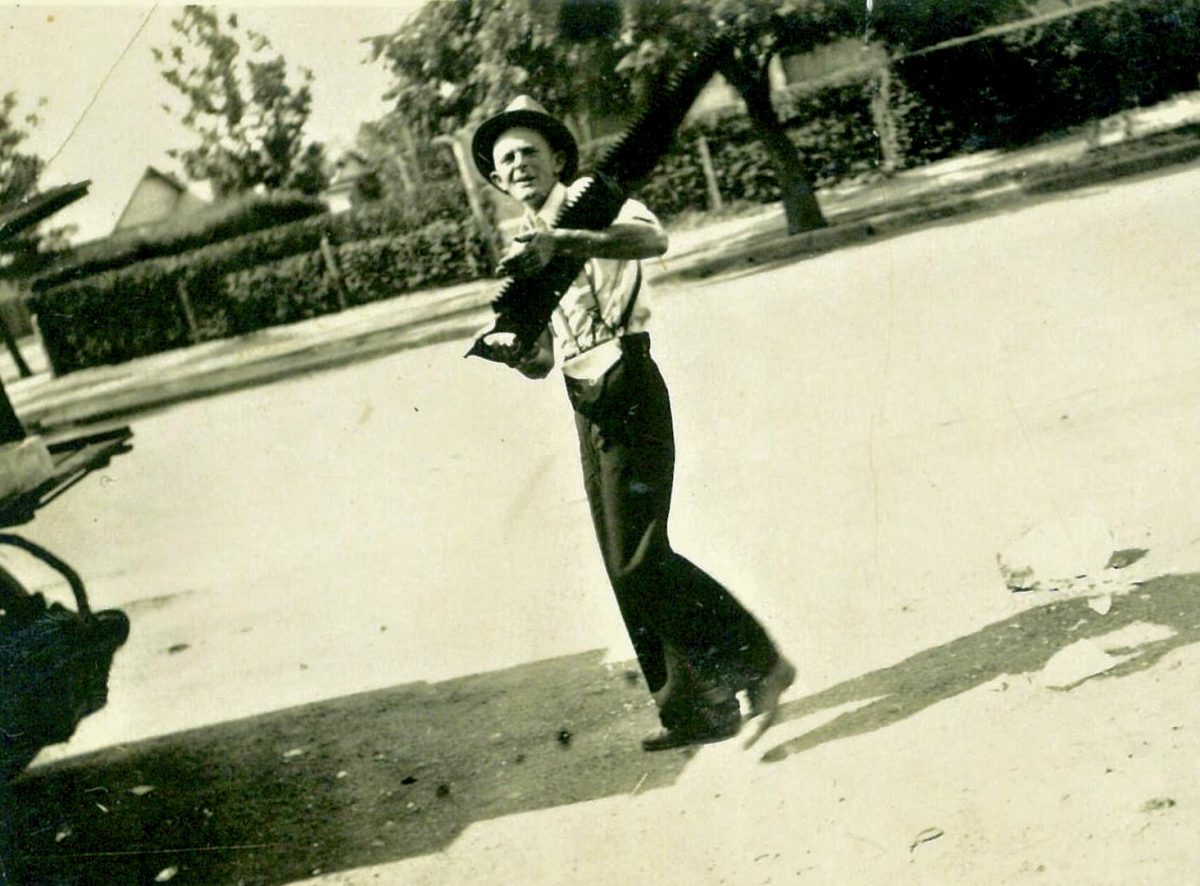
Wagga iceman Jack Passlow prepares to carve off a block with his saw. Photo: Museum of the Riverina (Passlow collection).
This week, the Museum of the Riverina take us back to the days before refrigeration, when the iceman was the coolest dude in town.
In the time before electric refrigeration, ice played a far more vital everyday role than it does today.
In early colonial times (and in remote and rural areas, well into the mid-20th century), fresh meat, milk, seafood and vegetables spoiled quickly in Australia’s hot summer climate, and preserving food was a challenge.
Salting, pickling and smoking were among the few options available.
The first ice in Sydney arrived from Boston by sea in 1839. It had been harvested from North American lakes and carried through the tropics in a heavily insulated sailing ship, the Tartar.
While the trade in natural ice continued elsewhere into the early years of the 20th century, in Australia, it was replaced in the 1860s by manufactured ice.
Australia pioneered the manufacture of ice when James Harrison of Geelong developed a prototype based on an 1834 British design for vapour-compression refrigeration.
Remembered as the “father of refrigeration”, James Harrison should also be the patron saint of cold beer after inventing a chilling machine for a Melbourne brewery in 1856.
While the domestic refrigerator was still many years in the future, people in metropolitan areas could now have regular visits from the iceman and ice chests, Coolgardie safes and later, more advanced refrigerators, became a fixture in many homes.
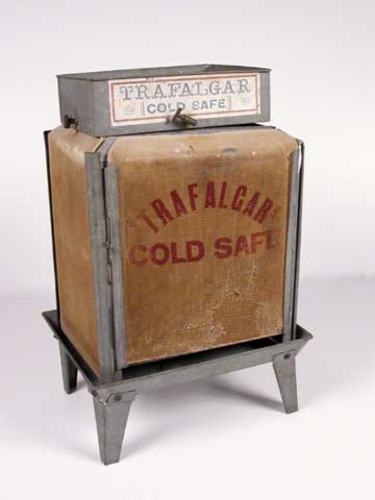
The Coolgardie safe was widely used in country areas well into the 20th century. Photo: Western Australian Museum.
Two Wagga companies that manufactured ice were the Murrumbidgee Dairy Co-operative and Barton’s Ice Works.
The blocks of ice were either delivered or the customer could pick one up from the business. When the ice was delivered, the iceman would custom-cut the block to fit whatever ice chest it was going into.
The iceman was a hit with the kids, who would trail behind the wagons or trucks in the hope of being thrown a chunk by the driver.
The featured photo, taken during the 1940s, shows Jack Passlow (1908-1974), who worked as an ice carter (iceman) for Barton’s Ice Works, on the corner of Edward and Docker streets (diagonally opposite the Wagga Base Hospital).
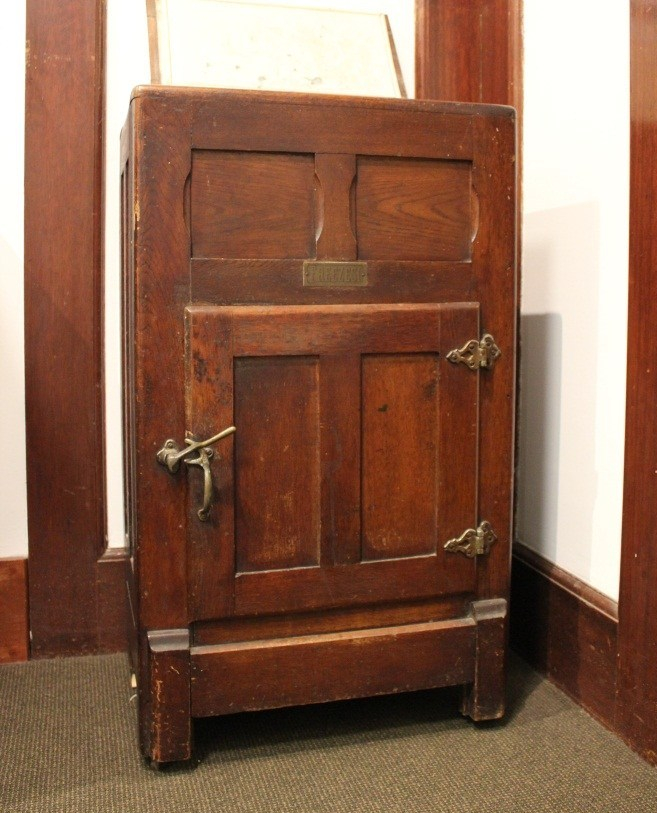
The ”Freezesi” range of ice chests was made in Australia in the first half of the 20th century. Photo: Hurstville Museum & Gallery collection.
Mr E J Barton started making ice at Wagga in 1938 and in a year, the business had grown so much that Barton put down an extra plant to cope with it.
Barton’s slogan was “the goods are second to none” and after a visit to his factory in December 1939, his ice was reported as being ”crystal clear and pure”.
Jack is seen above carrying the long serrated handsaw used to cut the blocks of ice – a job that took some skill.
It is said that one time, when Wagga was in the throes of a heatwave, the elderly patients across at the hospital were placed on ice to keep them cool!
Image and information supplied by Museum of the Riverina curator Michelle Maddison.







